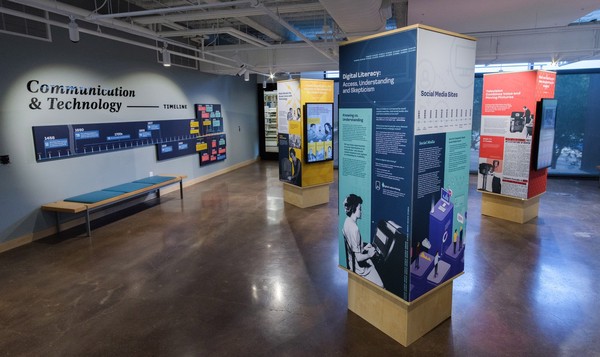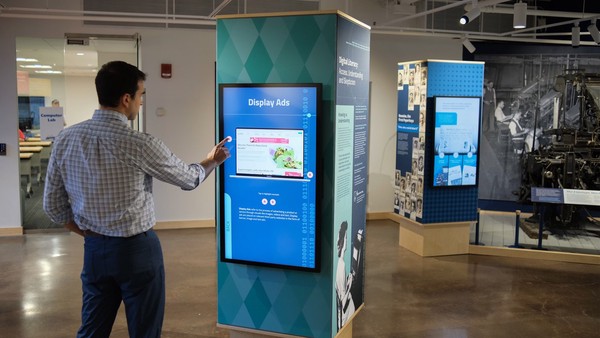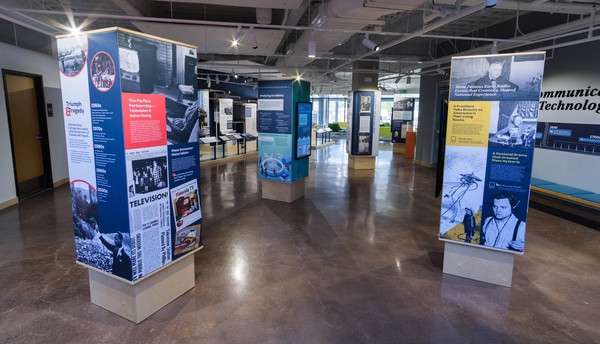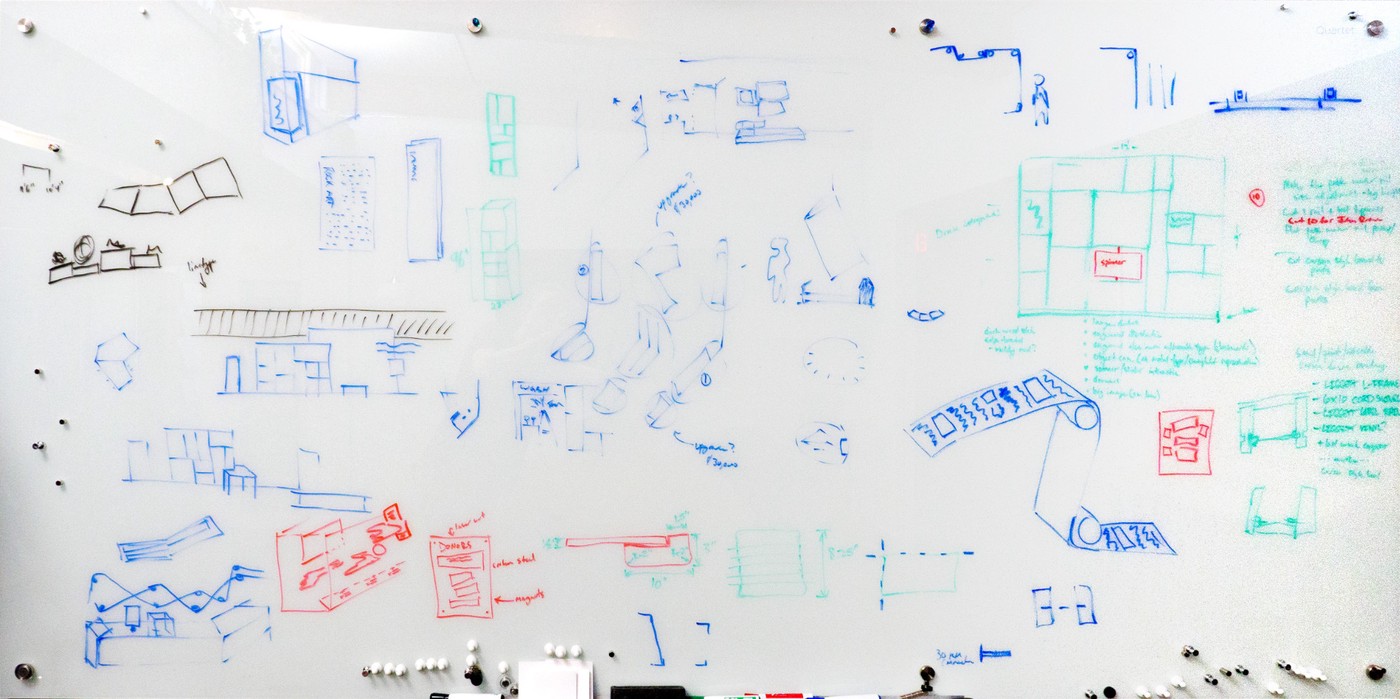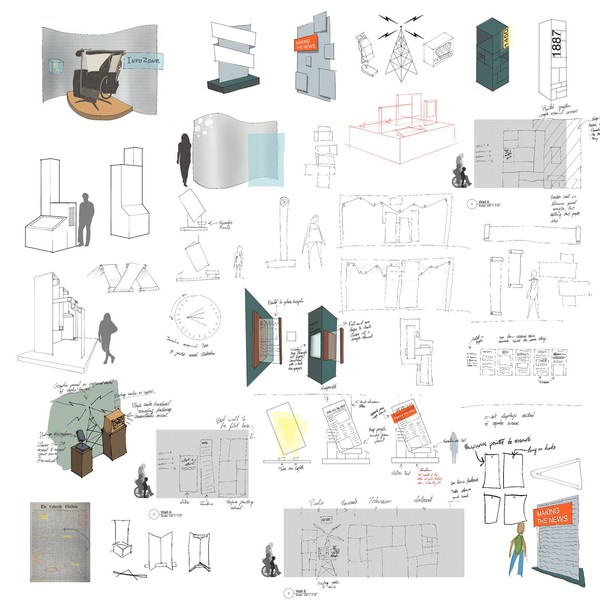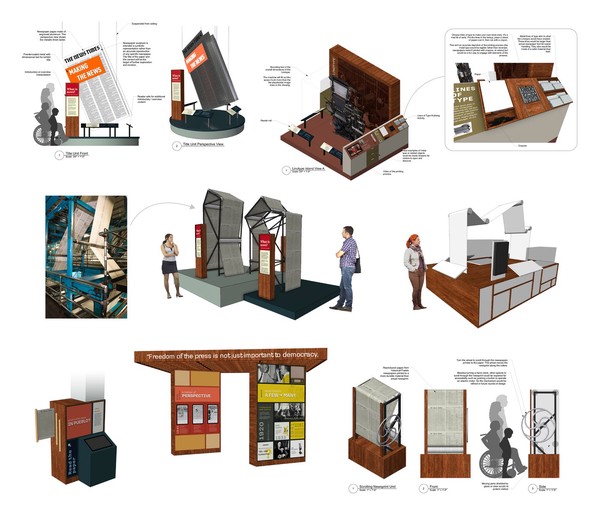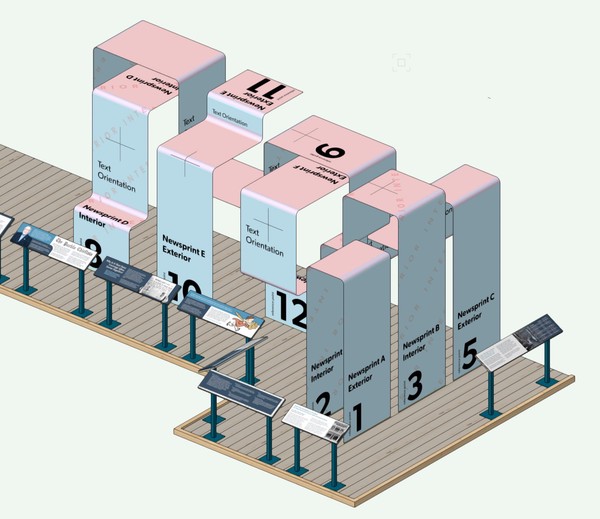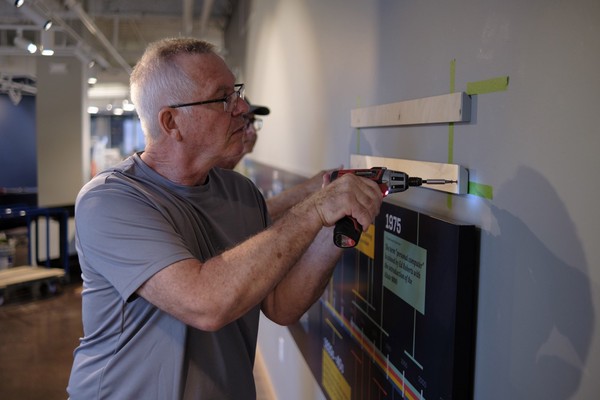The impressive Robert Hoag Rawlings Public Library in Pueblo, CO was undergoing major renovations and looking to re-envision an outdated exhibit currently on their fourth floor. The new exhibit would hold a prominent location on the main level next to an integrated coffee shop, but in a thoroughfare to a meeting room, maker space, and computer lab. With several large banks of windows in close proximity, they wanted a visually pleasing set of exhibits that would increase patrons’ media literacy, educate about the first amendment, and share a history of news (communication of information) both on a global scale as well as local. I headed the team at Upland Exhibits to design and build an exhibit to meet their goals for the roughly 1500 square foot space.
CREDITS
Project Management: Anthony Esau
Client-side Project Management: Nick Potter
Physical Design: Anthony Esau
Graphic Design: Graham Unruh
Digital interactive design and programming: Graham Unruh
Content Development: Nick Potter, Jen Mullen
Fabrication: Upland Exhibits fabrication team (Dan Miller, Mark Andres, Isaac Entz, Jon Flory Schrock)
Architects: Antoine Predock, Anderson Mason Dale Architects, HBM Architects
The Process
The primary challenge for the space was create an engaging area that still allowed convenient access to the surrounding rooms. Column-like displays were designed with attractive graphics so library patrons could easily navigate through to their desired destination, but if they had a few spare minutes, they could meander and listen to a clip from Orson Welles’ infamous radio broadcast of War of the Worlds or examine local newspaper coverage of the first man on the moon.
A Linotype machine that the library owns was an early inspiration for the project. Metal type used for mass printing prompted ideas of incorporating engraved sheet metal. Robert Hoag Rawlings—the namesake of the library building—was a newspaper man, so the mechanics of the leviathan printing presses served as a jumping off point for another avenue of thinking.
Ultimately, the long runs of newsprint in printing presses gained traction and evolved into a main feature of the exhibit—and my baby throughout the project—the Newsprint Sculpture. Along with input from the team during charettes, I took the concept of the centerpiece from sketch, to visualized digital model, through to shop drawings, hardware orders, and working with other vendors to fabricate laser-cut metal parts. Collaborating closely with the internal Upland Exhibits fabrication team to prototype a smaller version of the sculpture was critical. We significantly improved the mounting of the rollers to keep the runs of “newsprint” taut and aligned.
Graham Unruh designed and programmed the interactive touchscreens, but I pitched in and animated the looping “attract” screens. I also collaborated on initial technical details and ideas about how interaction could be designed in an accessible way, to be reachable by as many people as possible.
Throughout the design process, I created visualizations of the exhibit, continually updating the model in Vectorworks with new developments in the physical structures as well as the graphic layouts. I even programmed a script to automate importing new versions of the graphic layouts into Vectorworks to keep them up-to-date. To aid the graphic design, I set up an alternative model of the exhibit in Blender which was accessible to the graphic designer. Changes to the graphic layouts could easily be updated in this model without needing to go through me to plug them into Vectorworks, which allowed the designer to quickly check new designs or revisions in the context of the physical structures (in digital form).
From Vectorworks, the model was sent to Twinmotion for high quality, yet fast turnaround renderings of walk-through animations. These animations were regularly shared with the client which allowed them to easily review progress without having to interpret technical drawings.
Visualizing the exhibit also aided the lighting plan. I worked with the architects to come up with a general lighting plan within their constraints. Then I digitally set up lighting locations in Vectorworks and Twinmotion to pre-visualize. During installation, I implemented these plans onsite with additional in situ improvisation with the assistance of Isaac Entz, who was also on the installation team.
As always, I love to share a few in-process photos, so here are some images from the installation. Although I got in on the installation action myself, I was also the photographer and focused on the rest of the fantastic fabrication and installation crew.



